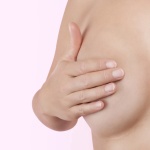 From Kathleen’s book Our Toxic World: A Survivor’s Guide.
From Kathleen’s book Our Toxic World: A Survivor’s Guide.
Eeek! You’re Putting What? Where??
While we’re on the subject of what’s touching your body, and especially your sensitive parts, consider feminine hygiene products, my sisters.
Skin is the body’s biggest organ. We have 16 to 21 square feet of skin. And it’s very absorbent. Consider the effectiveness of drugs like pain killers, nicotine withdrawal medications and even birth control delivered transdermally (through the skin). So your skin is quite literally drinking up anything that touches it.
Now think about the think mucosal skin of your genitals, and even more so, your vagina. Whatever you put there ends up in your bloodstream and is distributed throughout your body.
Now think about what your skin may be absorbing from sanitary pads, panty liners, tampons, nursing pads for breastfeeding moms and, for those of who have passed into cronehood, incontinence products.
Health Guru Dr. Joseph Mercola calls feminine hygiene products a “ticking time bomb,” estimating that the average American woman uses somewhere between 16,800 and 24,360 tampons in her lifetime.
What’s in that pad or tampon?
It’s important to note that manufacturers are not required to disclose the ingredients in their products. This undoubtedly includes pesticide-saturated cotton, plastic, dioxins (to bleach fibers white) synthetic fibers and petrochemicals. We’re talking about bisphenol-A (remember that lovely little endocrine disruptor?), its kissing cousin phthalate and any number of other odor neutralizers and leak stoppers.
Let’s just take a brief look at dioxin alone. Fibers are naturally a buff color, but we’ve been conditioned to want our sanitary products to appear clean and white, so they are bleached with that Black Hat halogen, chlorine, which disrupts iodine absorption and, worse yet, creates dioxin, an endocrine disruptor that accumulates in fatty tissues and creates abnormal cell growth and suppresses the immune system. There is no safe level of exposure to dioxin.
But that’s not the end of it. We already know about the pesticides used to produce cotton. Well, my friends, most of the padding in these products is cotton. Add in the fact that almost all cotton produced in the US is genetically modified, and that also means it is saturated with RoundUp glyphosate, with all the negative health effects we’ve discussed at length.
There is also the risk of Toxic Shock Syndrome, a rapidly-multiplying bacterial infection that can be life threatening.
Inserting a couple of dozen toxin-laden tampons in your vagina every month may actually be worse than eating contaminated foods, since the skins so quickly and indiscriminately absorbs poisons into your body.
What to do?
Most of us aren’t ready to go back to rag padding or anything so primitive. Many of us are also conscious of the environmental waste these products create.
Probably the easiest solution is a menstrual sponge. It’s noting more than a natural sea sponge. You can buy them at Walgreen’s or at other online sources. Back in the day before my croning, I had three or four of them. You simply attach a piece of dental floss and it works exactly like a tampon, except your rinse them out and re-insert them. In between periods, boil them in water with a little vinegar to be sure there is no residual bacteria. Easy. Cheap. Effective!
There are also re-usable silicon menstrual cups like the Diva Cup made to be worn internally that trap the blood and are then washed out.
Organic cotton pads are available from companies like Natracare and Glad Rags and even organic unbleached tampons from Seventh Generation and Organyc offer a more traditional approach.
Read more about our Toxic World.







